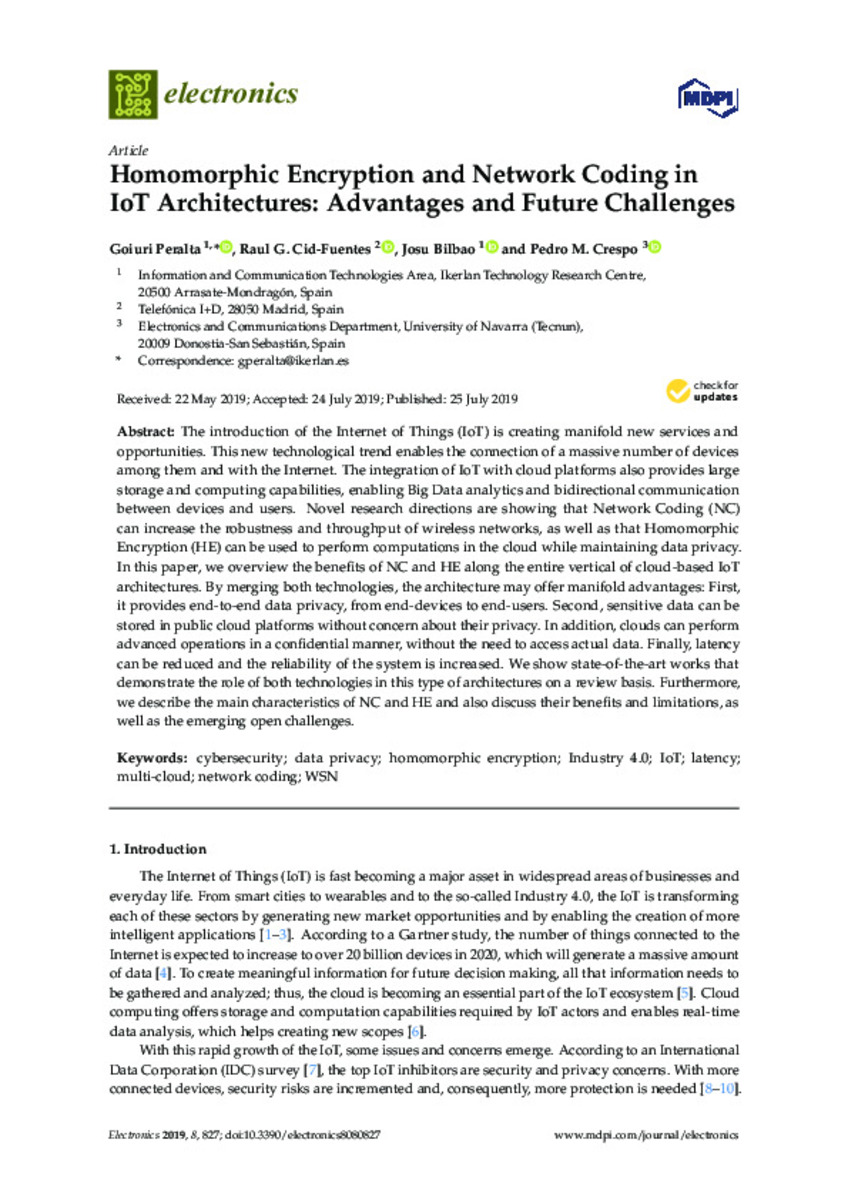Homomorphic encryption and network coding in IoT architectures: Advantages and future challenges
Palabras clave :
Cybersecurity
Data privacy
Homomorphic encryption
Industry 4.0
IoT
Latency
Multi-cloud
Network coding
WSN
Fecha de publicación :
2019
Nota:
Licensee MDPI, Basel, Switzerland. This article is an open access
article distributed under the terms and conditions of the Creative Commons Attribution
(CC BY) license (http://creativecommons.org/licenses/by/4.0/).
Cita:
Peralta, G. (Goiuri); Cid-Fuentes, R.G. (Raul G); Bilbao, J. (Josu); et al. "Homomorphic encryption and network coding in IoT architectures: Advantages and future challenges". Electronics. 8 (8), 2019, 827
Aparece en las colecciones:
Estadísticas e impacto
0 citas en

0 citas en

Los ítems de Dadun están protegidos por copyright, con todos los derechos reservados, a menos que se indique lo contrario.







